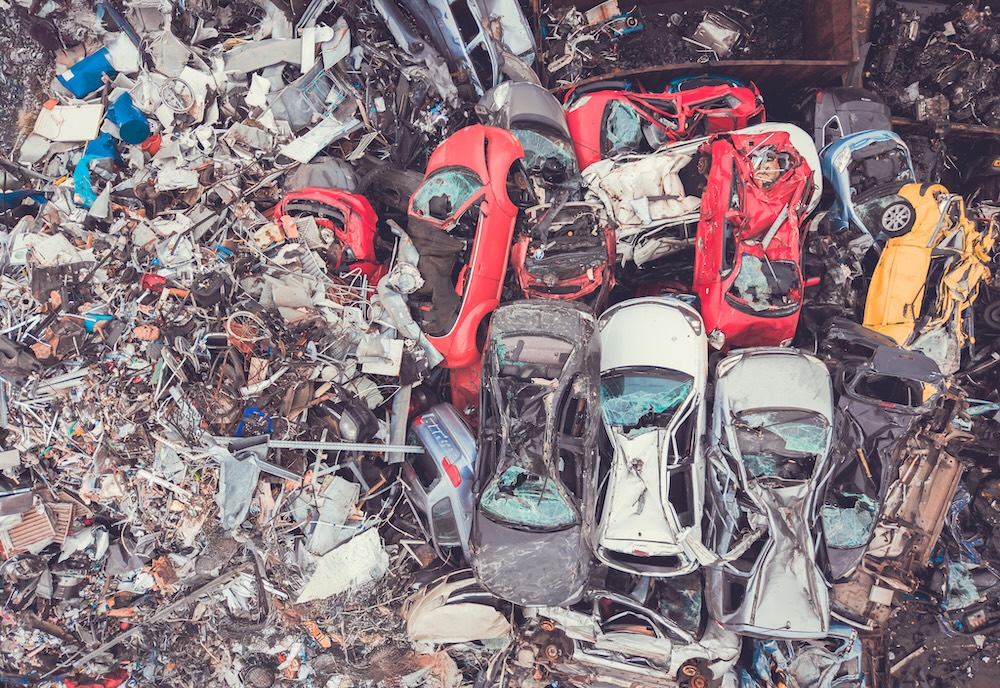When we think about vehicle pollution, the image is almost automatic: clouds of exhaust pouring from a tailpipe. But while exhaust emissions are a major contributor to climate change and air pollution, they’re only part of the story. Cars pollute in many ways — some visible, some invisible — and these impacts persist even as electric vehicles (EVs) replace gas-powered cars.
From microplastics to heavy metals, here are seven surprising ways cars pollute the planet that have nothing to do with tailpipe emissions.
1. Tire wear particles
Every time your tires roll over the road, tiny fragments of rubber and chemical additives are worn away. These particles — many smaller than a grain of sand — become airborne or wash into storm drains, eventually reaching rivers, lakes, and oceans.
Tire dust contains synthetic rubber, carbon black, zinc, and other compounds that can harm marine life. The San Francisco Estuary Institute has identified tire wear particles as one of the largest sources of microplastic pollution on the U.S. West Coast.
EVs, while cleaner in other respects, can shed more tire particles due to their heavier weight, though tire design improvements may help reduce this over time.
2. Brake dust
Brake dust is released when brake pads and rotors wear down. These particles contain metals like copper, iron, and antimony — all of which can be harmful to both human health and aquatic ecosystems.
In cities, brake wear can account for 20–55% of airborne traffic-related PM2.5. These ultrafine particles can be inhaled deeply into the lungs, and runoff from roads carries them into waterways. Even EVs produce brake dust, though regenerative braking helps reduce it.
3. Road surface wear
Vehicles don’t just wear out their own parts — they wear out the road itself. The constant grinding of tires against asphalt or concrete releases particles of dust, bitumen, and other road-surface materials.
These particles can become airborne or wash into water systems during rain. Heavy vehicles — whether trucks or large SUVs — accelerate this process, contributing to both pollution and infrastructure degradation.
4. Fuel and fluid leaks
Even well-maintained vehicles can drip fluids like oil, coolant, and brake fluid over time. On roads and driveways, these liquids can seep into soil or wash into storm drains, where they contaminate local water systems.
Oil and fuel contain hydrocarbons that can harm aquatic life, while antifreeze contains ethylene glycol, which is toxic to both animals and humans. In areas with high traffic density, accumulated leaks can create chronic water quality problems.
5. Air conditioning refrigerants
Your vehicle’s air conditioning system uses refrigerants — often hydrofluorocarbons (HFCs) — that are potent greenhouse gases if they leak. Even small releases during maintenance or from aging components contribute significantly to climate change.
Some newer vehicles use refrigerants with lower global warming potential, but legacy systems still in operation continue to emit high-impact HFCs into the atmosphere.
6. Manufacturing and disposal
The environmental cost of a car starts long before it’s driven and continues after it’s scrapped. Manufacturing requires raw materials like steel, aluminum, plastics, and — in the case of EVs — lithium, cobalt, and nickel for batteries. Mining and refining these materials have significant environmental footprints, from habitat destruction to water pollution.
At the end of a vehicle’s life, disposal and recycling processes can also release pollutants if not properly managed, particularly from fluids, batteries, and plastics.
7. Noise pollution
While not a chemical pollutant, noise from vehicles is an often-overlooked environmental impact. Chronic exposure to traffic noise has been linked to stress, sleep disturbance, and even cardiovascular problems in humans. Wildlife is also affected — studies show road noise can disrupt animal communication, feeding, and migration patterns.
EVs are quieter at low speeds, but tire and wind noise still contribute to overall sound pollution, especially at highway speeds.
Why these hidden pollutants matter
Non-exhaust emissions and other indirect pollution sources will make up a larger share of total vehicle-related pollution as tailpipe emissions decline. Without addressing them, we risk solving one problem while allowing others to worsen.
For example:
- Tire and brake dust contribute to microplastic contamination and urban air quality problems.
- Road wear and fluid leaks impact soil and water ecosystems.
- Manufacturing impacts shift pollution upstream, often to communities far from where vehicles are driven.
What can be done
Improve materials
Research into low-emission tires, copper-free brake pads, and sustainable road surfaces can help reduce particle pollution.
Drive lighter
Smaller, lighter vehicles reduce tire, brake, and road wear while also being more energy-efficient.
Maintain your car
Regular maintenance helps prevent fluid leaks and ensures air conditioning systems are properly sealed.
Support better infrastructure
Porous pavement, improved drainage systems, and frequent street cleaning can reduce the environmental spread of particles and contaminants.
Rethink transportation
Public transit, cycling, walking, and car-sharing can reduce the total number of vehicle miles traveled, cutting all forms of vehicle-related pollution.
Final Thoughts
Cars are far more than their tailpipes when it comes to environmental impact. From tire and brake particles to manufacturing emissions and noise pollution, every vehicle leaves a multi-layered footprint. Recognizing these hidden sources of pollution is the first step toward addressing them.
As technology evolves, we can reduce — but not entirely eliminate — these impacts. Until then, making smarter transportation choices and supporting cleaner design will help keep both our air and our planet healthier.









Reader Interactions